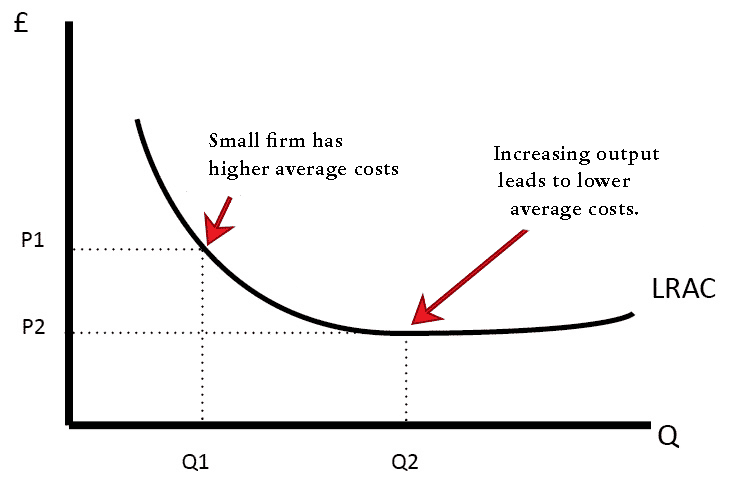The main appeal of large fast food such as McDonald’s or Subway is their competitive pricing. You may find that the price of one of their items is almost equal to the cost it takes for you to make it yourself. So, where does the profit come from? The reality is their cost of production is much lower than everyone else because they benefit from economies of scale.
Definition
The economy of scale is a proportionate gain in saving of cost as an organization increases its scale of production.
Why does it work
There are two primary cost brackets in production: fixed cost and variable cost. Fixed cost is the cost that will be the same regardless of the number of products produced. These are normally the physical infrastructure, the minimum number of employees to make sure operation works, or the rent on certain machinery.
The variable cost is self-explanatory as it varies depending on the amount of product produced. Expenses on components or materials that make products are listed under variable cost.
The average cost of a product is calculated by the total cost divided by the number of products produced. Through this, we can see that the fixed cost for making one hamburger is the same as one hundred hamburgers. Therefore the average cost per burger will decrease.
For example, a company has a fixed cost of $100. Making one hamburger will make it a $100 burger, whereas when making 100 burgers, each burger will only cost $1.
How is it represented?
Economies of scale are represented through this diagram below:

It is similar to an upward-facing parabola. As you move towards the right of the curve (meaning you produce more), the average cost decreases. However, if it passes a certain point, the average price goes back up due to diseconomies of scale.
Diseconomies of scale
When a company grows too large, it starts becoming inefficient. Normally this is caused by poor management, poor communication, the need to expand into different branches, or lack of motivation by all parties involved.
Final thoughts
Economies of scale is a term used to describe a company benefiting from a lower average cost due to its large-scale production structure. It is a good concept to understand when making stock-related decisions. Also, be aware of the risk that comes with diseconomies of scale as it can pose a detrimental trap for big, well-structured corporations.



